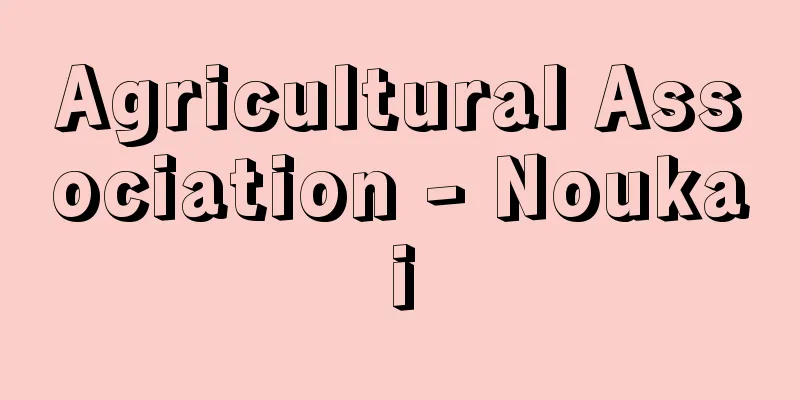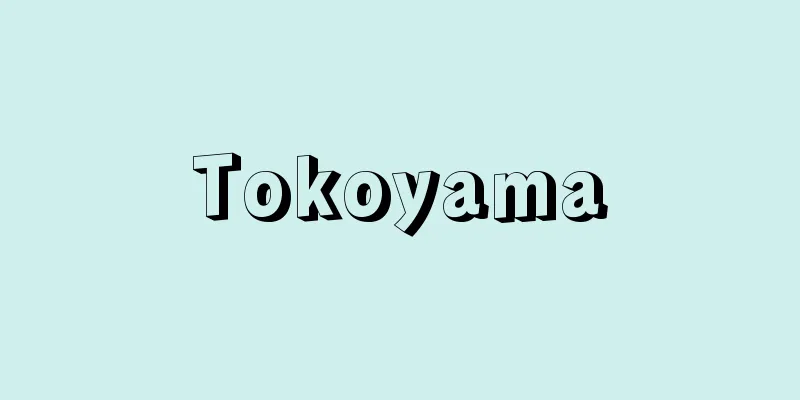Agricultural Association - Noukai

|
One of the major agricultural organizations before the Second World War. The Agricultural Association Law was first proposed to the Diet in 1891 (Meiji 24), but was rejected due to the dissolution of the Diet. It was proposed again in 1899 and passed. This law legally recognized the so-called system agricultural associations of each city, town, village, county, and prefecture as organizations for agricultural improvement. The system agricultural associations were formed in 1894-95 at the invitation of Maeda Masana, and were organized by Tamatsuri Kizo, Ikeda Kenzo, Yokoi Tokiyoshi, Sawano Jun, and Ishikawa Rikinosuke, who traveled around the country in groups to organize farmers. However, when the Agricultural Association Law was enacted, the National Agricultural Association, the national organization of agricultural associations, was split into the Maeda faction, which wanted to be an independent organization, and the Yokoi faction, which wanted to obtain subsidies and be linked to government guidance. The government rejected Maeda's claim that the Agricultural Association should be an independent organization with the right to compulsorily collect membership fees, and kept the Agricultural Association under government control by providing subsidies of up to 150,000 yen. In the end, the National Agricultural Association as a central organization remained a mere voluntary corporation, and Maeda, Ishikawa, and others who were dissatisfied with this law left the Agricultural Association active. Later, in 1910 (Meiji 43), the law was amended, and the National Agricultural Association was reorganized, and special members appointed by the government were added to the board of directors, and it was renamed the Imperial Agricultural Association, and it became the central organization of the Agricultural Associations. Thus, a controlling agricultural policy that extended from the government to the landlords to the farmers, as symbolized by the "sabre agricultural policy," was established. In 1922 (Taisho 11), the law was amended to allow the right to collect membership fees and to add the Agricultural Association's function of mediating and arbitrating tenant disputes. Until it was reorganized into the Central Agricultural Association in 1943 (Showa 18), which had a strong wartime flavor, the Agricultural Associations promoted agricultural improvement under the guidance of the government. [Osamu Sota] [Reference] |Source: Shogakukan Encyclopedia Nipponica About Encyclopedia Nipponica Information | Legend |
|
第二次世界大戦前の主要農業団体の一つ。農会法は1891年(明治24)に初めて議会に提案されたが、議会解散によって流れ、99年に改めて提案されて成立した。同法によって各市町村―郡―府県のいわゆる系統農会が、農事改良の組織として法認された。系統農会は1894~95年に、前田正名(まさな)の呼びかけにより、玉利喜造(きぞう)、池田謙蔵、横井時敬(ときよし)、沢野淳(じゅん)、石川理紀之助(りきのすけ)らが分担して全国行脚し、農家を組織化したものである。しかし、農会法制定にあたり、農会の全国組織である全国農事会を中心に、自主団体たろうとする前田派と、補助金を得て政府指導下につながろうとする横井派に割れた。政府は、会費の強制徴収権をもつ自主団体たろうとする前田の主張を排し、15万円以内の補助金交付によって、政府統制下に農会をつなぎとめた。結局、中央組織としての全国農事会は単なる任意法人にとどまり、この法律を不満とする前田や石川らは農会活動から去った。その後1910年(明治43)に法律が改正され、全国農事会を改組し、官選の特別議員を評議員会に加えるなどして帝国農会と改名し、系統農会の中央組織とした。こうして「サーベル農政」に象徴されるような、政府―地主―農民に至る統制的農政が確立した。1922年(大正11)に、会費徴収権の容認、農会の小作争議調停・仲裁機能追加の法改正があった。1943年(昭和18)に戦時色濃い中央農業会に改編されるまで、系統農会は政府指導下で農事改良を推進した。 [祖田 修] [参照項目] |出典 小学館 日本大百科全書(ニッポニカ)日本大百科全書(ニッポニカ)について 情報 | 凡例 |
Recommend
Koshi - Koshikoku
In the Edo period, when the total village land are...
Publius
…A classic of American politics that developed a ...
Meliola
...Sooty mold rarely causes definitive damage, bu...
clavus
...The trimmings on Chanel suits and the bellows ...
Theoretical cost of living
It refers to the cost of living obtained by theor...
Dubreuil, T.
…Antoine Caron (c. 1520-c. 1600), who worked unde...
Antonescu, I.
...In 1934, the Balkan Entente was formed with Yu...
al-'āmmiya (English spelling) alammiya
…Although some popular literature reflects everyd...
Management by Objectives
This is a concept or system where not only do we s...
Bonet, P. (English spelling) BonetP
…After Grolier returned to France, he brought a g...
Agricultural Land Law -
In a broad sense, it can mean laws related to far...
Column - Eiren
A couplet on the Bo Zhu. A couplet. A Bo Chronicle...
Shoji Sekine
Western-style painter. Along with Murayama Kaita,...
Rugs - Shikimono
It means something placed underneath to prevent o...
Faroe Islands - Faroe
A Danish archipelago located at 62° north latitude...









